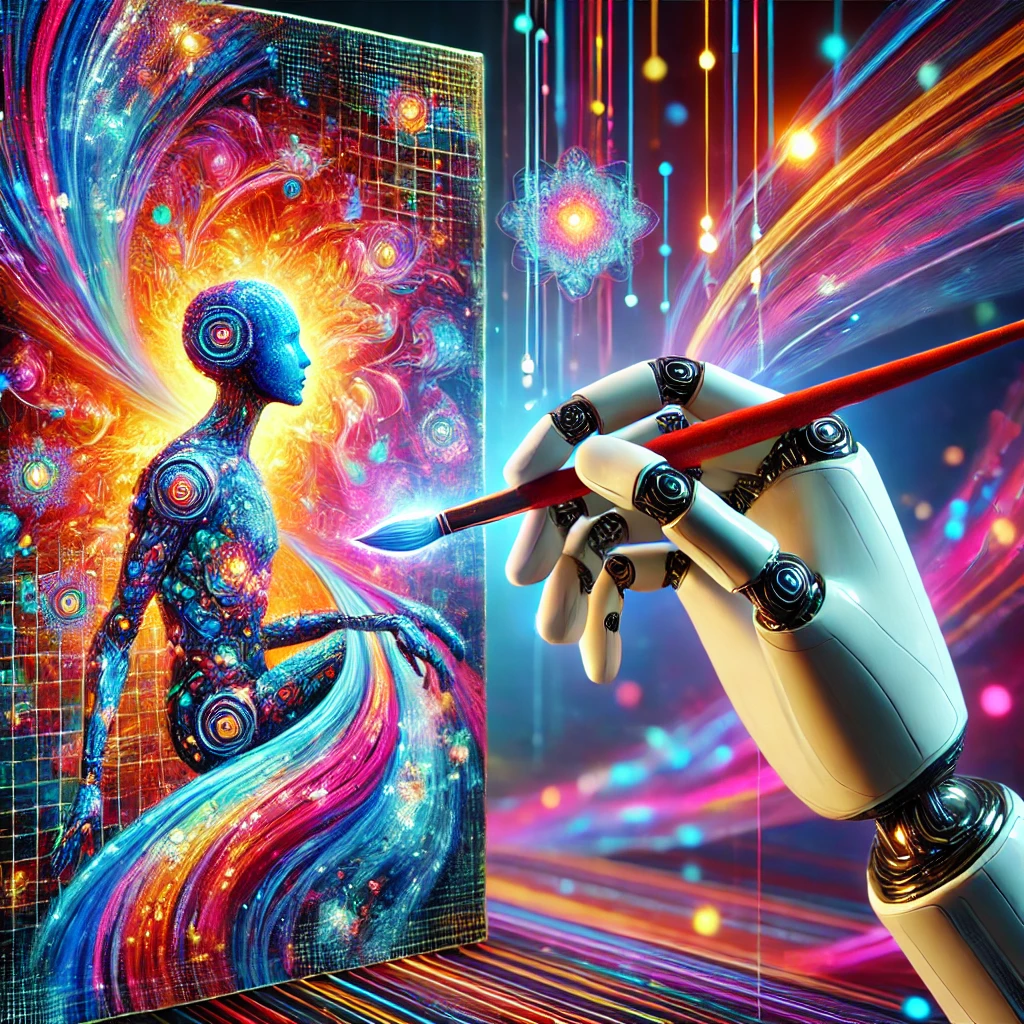In the digital age, the art world is undergoing a transformation. Artificial Intelligence (AI) has emerged as a powerful tool, enabling artists to create mesmerizing and innovative artworks. With AI-generated art gaining popularity, digital artists now have a unique opportunity to monetize their creations. This article explores how monetizing AI-generated art is paving a new frontier for digital artists, providing them with unprecedented avenues for income and creative expression.
Understanding AI-Generated Art
AI-generated art is the result of collaboration between human creativity and advanced algorithms. Artists use AI tools, such as DALL·E, Midjourney, and Stable Diffusion, to produce stunning visuals that range from abstract compositions to hyper-realistic images. These tools use machine learning models trained on vast datasets of images, enabling them to generate unique art pieces that push the boundaries of imagination.
What makes AI-generated art so appealing is its limitless potential. Digital artists can experiment with styles, colors, and themes that would be challenging to achieve using traditional methods. This versatility has sparked a growing interest in the art community, attracting collectors, designers, and businesses eager to purchase one-of-a-kind digital creations.
Why Monetizing AI-Generated Art is a Game Changer
The rise of AI-generated art presents an exciting opportunity for digital artists to monetize their skills and creativity. Unlike conventional art, which often requires physical materials and space, AI art is digital by nature, making it easier to sell, distribute, and scale. Here are some key reasons why monetizing AI-generated art is a game changer:
- Expanding Market Demand: The demand for digital art is growing, driven by the popularity of NFTs (Non-Fungible Tokens) and virtual spaces such as the metaverse. Collectors are eager to own unique digital assets, making AI-generated art a highly sought-after commodity.
- Diverse Revenue Streams: Digital artists can explore various revenue streams, including selling NFTs, licensing artwork for commercial use, and offering custom AI art commissions. This flexibility allows artists to reach a global audience and maximize their income potential.
- Creative Freedom and Efficiency: AI tools enable artists to experiment with complex designs and concepts rapidly. This efficiency allows them to produce more artwork in less time, increasing their productivity and profitability.
How to Monetize AI-Generated Art
Monetizing AI-generated art requires a strategic approach to maximize its earning potential. Here are some effective ways digital artists can profit from their creations:
1. Selling NFTs (Non-Fungible Tokens)
One of the most popular methods of monetizing AI-generated art is through NFTs. NFTs are unique digital assets stored on a blockchain, ensuring ownership and authenticity. By minting AI-generated artwork as NFTs, artists can sell them on platforms such as:
- OpenSea
- Rarible
- Foundation
- SuperRare
To succeed in the NFT market, artists should:
- Create Limited Editions: Scarcity increases the value of digital art. Consider releasing limited editions or exclusive collections.
- Build a Community: Engage with potential buyers on social media platforms like Twitter and Discord. Sharing behind-the-scenes content can help build anticipation and loyalty.
- Collaborate with Influencers: Partnering with established NFT artists or influencers can amplify reach and credibility.
Also Read: What Is Deepseek R1? Step By Step
2. Licensing Artwork for Commercial Use
Digital artists can license their AI-generated art for commercial use, allowing businesses, designers, and marketers to use the artwork in various applications, such as:
- Digital Advertisements
- Website Design
- Social Media Campaigns
- Merchandise and Apparel
Platforms like Adobe Stock, Shutterstock, and Etsy are excellent choices for licensing digital art. Artists can set their pricing terms, retain copyright, and earn passive income through royalties.
3. Offering Custom AI Art Commissions
For those who prefer a personalized approach, offering custom AI art commissions is a lucrative option. Digital artists can work directly with clients to create bespoke pieces tailored to their specific needs, whether for personal collections, branding, or gifts.
To attract commissions:
- Showcase a Portfolio: Maintain an online portfolio or social media presence to display your versatility and style.
- Promote on Art Communities: Platforms like DeviantArt, ArtStation, and Behance are great for networking and attracting potential clients.
- Offer Exclusive Rights: Clients are often willing to pay a premium for exclusive ownership of custom artwork.
Challenges and Considerations
While monetizing AI-generated art offers immense potential, artists should be mindful of the challenges involved:
- Copyright and Ownership Issues: AI-generated art raises questions about copyright and ownership. Artists should familiarize themselves with legal frameworks and clearly define terms when selling or licensing their artwork.
- Ethical Concerns: The use of AI in art creation has sparked ethical debates about authorship and originality. Maintaining transparency about the creative process and ensuring ethical use of datasets is crucial.
- Market Competition: The growing popularity of AI art means increased competition. Standing out requires consistent innovation, strategic marketing, and community engagement.
The Future of AI-Generated Art
Monetizing AI-generated art is undoubtedly a new frontier for digital artists, offering limitless possibilities for creative expression and financial success. As technology advances, the line between human creativity and artificial intelligence will continue to blur, giving rise to new art forms and business models.
Digital artists who embrace AI tools today are likely to be at the forefront of this revolution. By strategically monetizing AI-generated art through NFTs, licensing, and commissions, they can build sustainable careers and shape the future of the digital art landscape.
Conclusion
In conclusion, monetizing AI-generated art represents a transformative opportunity for digital artists. With the growing demand for digital assets and the flexibility of AI tools, artists can explore diverse revenue streams and reach a global audience. By staying informed about market trends, legal considerations, and ethical practices, digital artists can thrive in this exciting new frontier.
Whether you’re an established artist or just starting, now is the perfect time to explore the world of AI-generated art and unlock its monetization potential. As technology continues to evolve, so will the opportunities for digital artists to innovate and inspire.

